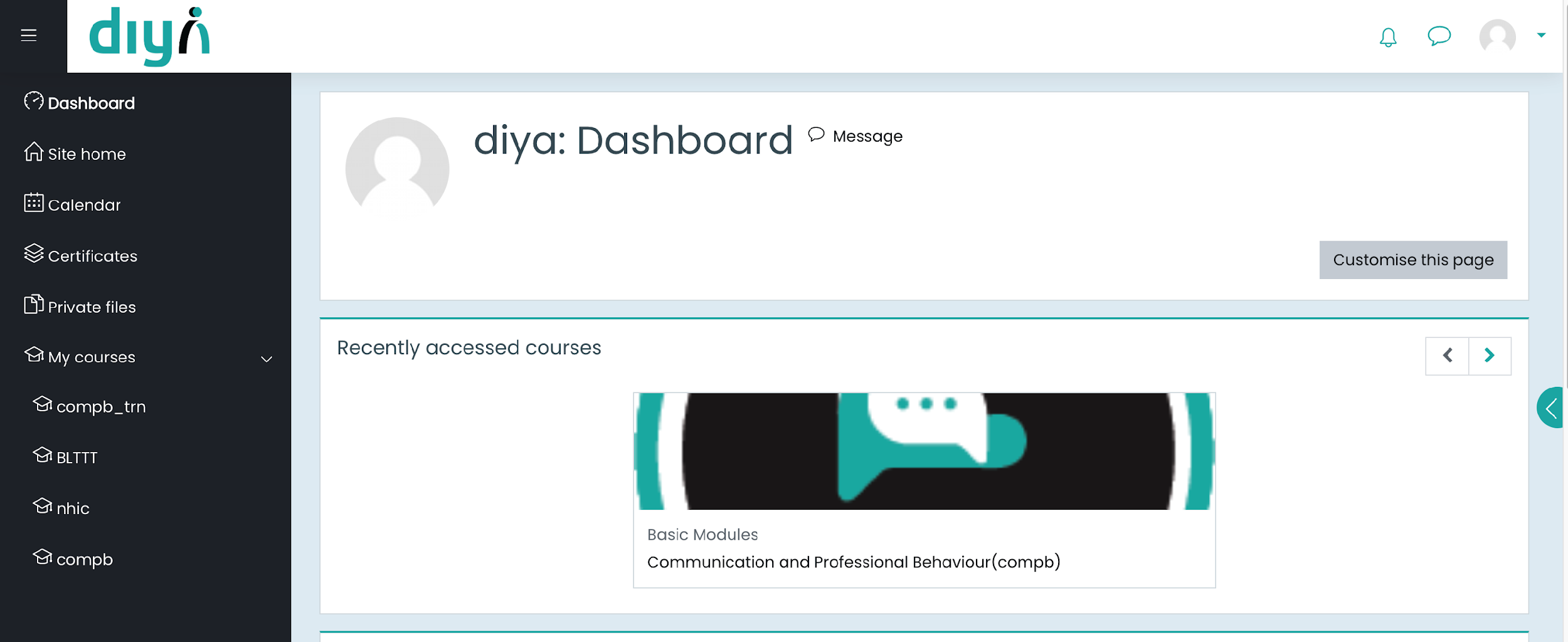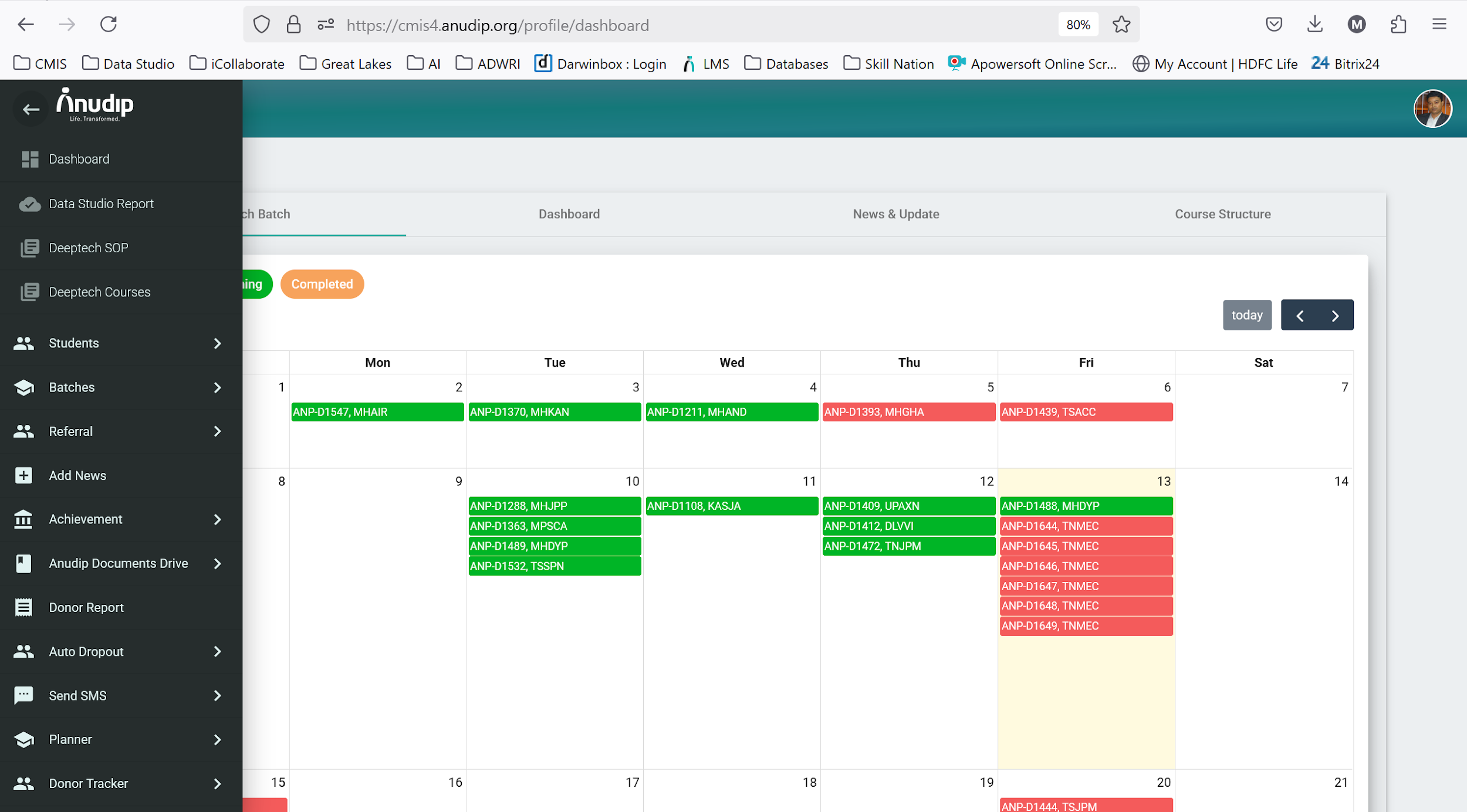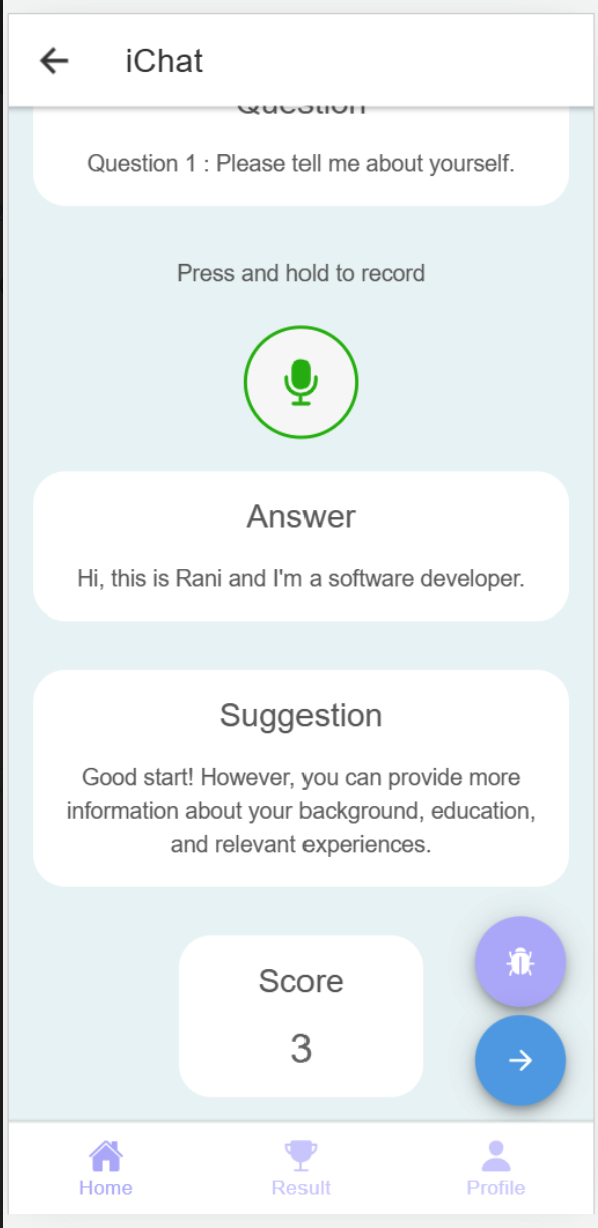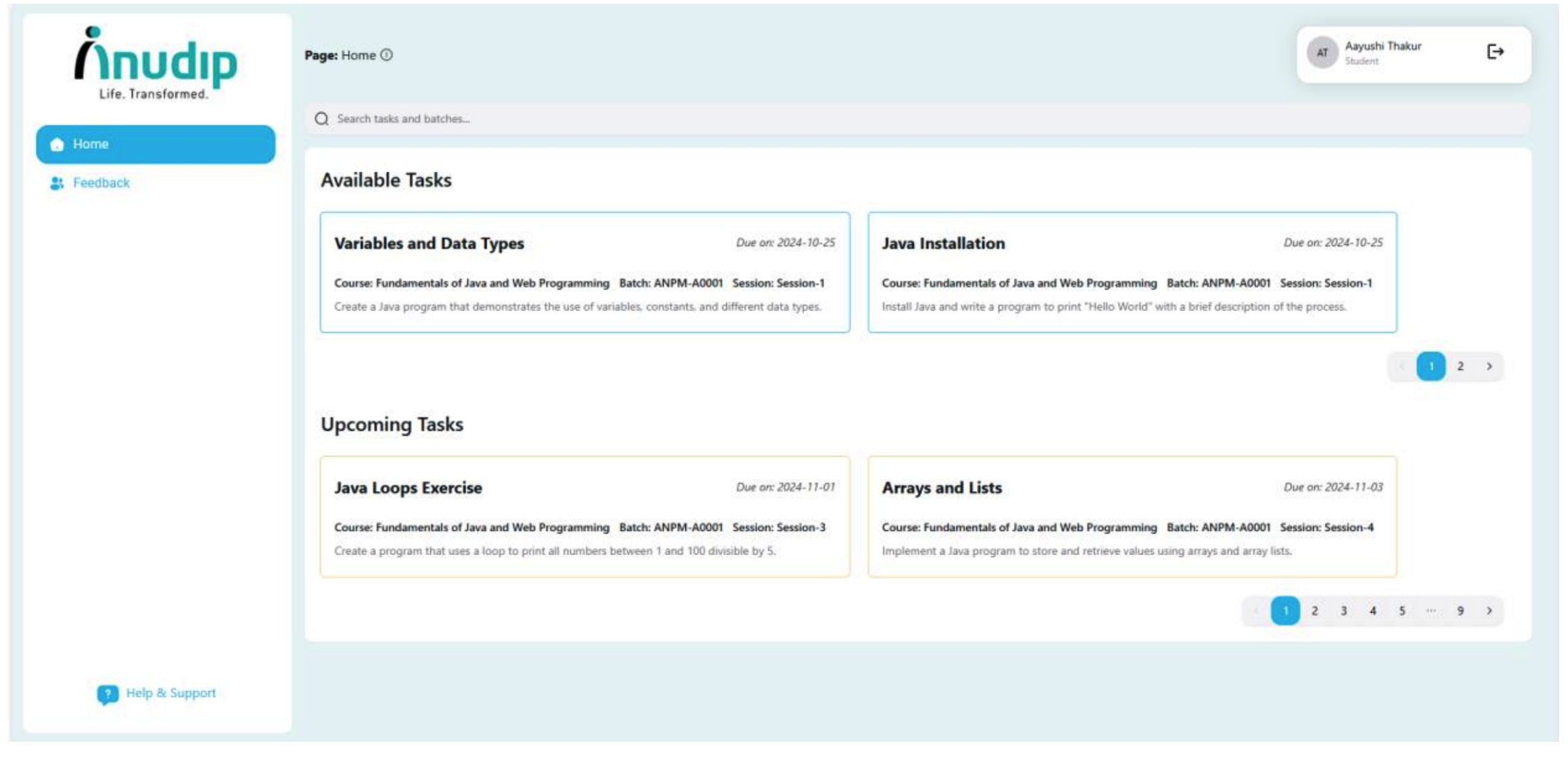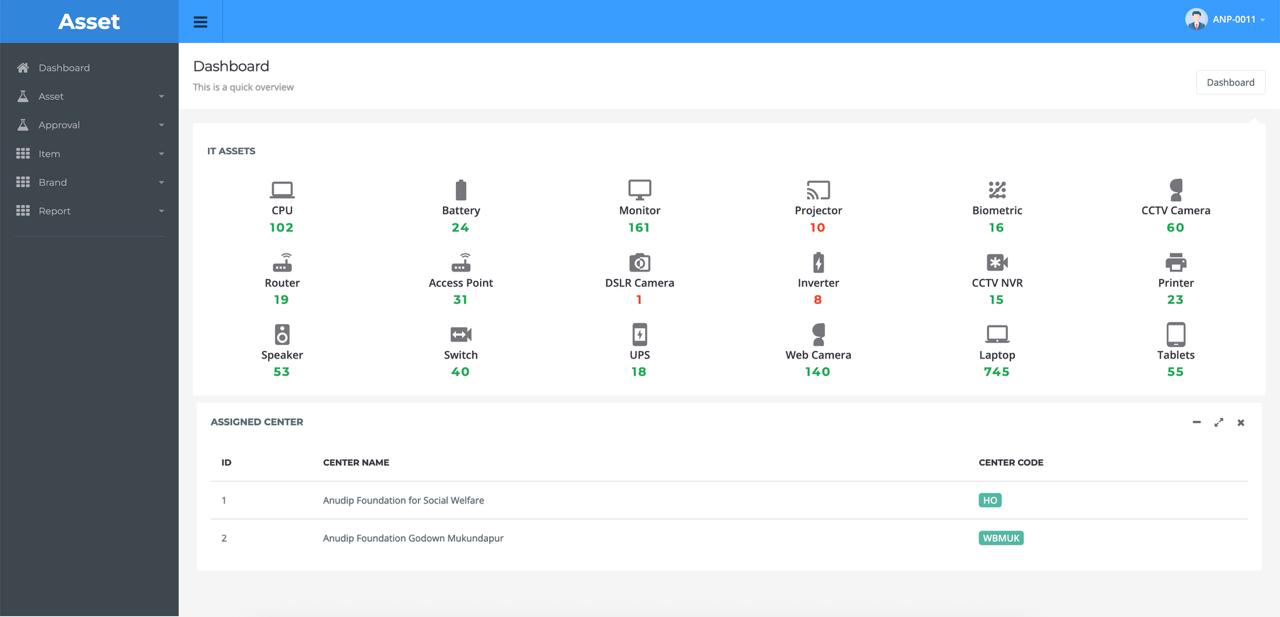Scaling Inclusive Digital Livelihoods Through Technology & AI
Summary
Impact Created
70%+
Placement Rate
20X
Faster Job Matching
90+
Centers Digitized
About the organisation
Anudip creates digital livelihoods for underserved communities through technology and by combining 21st century skills with Artificial Intelligence (AI) applications. Since their inception in 2007, Anudip has impacted 500,000+ lives by providing technology-driven employability and entrepreneurship for crisis-stricken youth and women
Problem Statement
Anudip's rapid growth exposed the limitations of its manual, fragmented legacy model, hindering seamless learner journeys, consistent quality, data-driven decision-making, and equitable scale across diverse geographies.
The Solution
Anudip undertook a deliberate digital transformation, building a hybrid technology ecosystem (CMIS, LMS, custom tools like JD-CV Match, AI applications) to streamline the learner journey, standardize content, enable personalized support, and make data actionable, all while amplifying human capacity.
Key Learnings
- Technology must be mission-anchored, not trend-driven.
- Co-ownership by people drives adoption.
- Data must drive action, not just documentation.
Key Technologies Used
- LMS
- Virtual Interviewers
- JD-CV Match
- Gamified Learning
- Micro-Content Platform
- Data Dahsboards
Quick Facts

Organisation Name
Anudip Foundation for Social Welfare

Organisation Website
Visit Site

Founding Year
2007

Number of Beneficiaries served
500,000+ youth

Geography Served
22 States across India

Focus Area
Programmatic Impact, Operational Efficiency
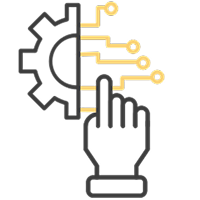
Functions Impacted
Program Delivery, Beneficiary Services, Data & Analytics, Placements

SDG Addressed
Full Case Study
Challenges
Rapid growth strained a manual, fragmented model, hindering seamless learner journeys, consistent quality, and scalable impact.
As the organization expanded exponentially over nearly two decades, the scale and diversity of its operations began to strain a legacy model heavily reliant on manual effort, fragmented processes, and localized expertise. This created significant barriers to delivering consistent quality and impact.
-
Fragmented Learner Journey
The entire learner journey—from mobilization and enrollment to training, mentoring, and placement—lacked seamless orchestration. Systems did not communicate, data was trapped in silos, and frontline teams struggled to maintain quality across diverse learner profiles (varying digital readiness, linguistic backgrounds, exposure) and geographies.
-
Inconsistent Quality & Support
Trainer variability, especially in delivering soft skills and English communication, affected consistency. Delivering personalized support was challenging in large batches, while mentorship systems were informal, and alumni engagement lacked structure or scale.
-
Limited Data Utility
Despite accumulating a wealth of data, the organization lacked the tools to draw timely insights or effectively use data for decision-making and impact reporting.
Constraints to Equitable Scale
These gaps severely constrained its ability to scale equitably, respond dynamically to learner needs, and credibly demonstrate outcomes to funders and partners. The imperative was not merely digitization, but a complete reimagination of its delivery engine.
-
Human-Centric Solution Required
The challenge was to build a cohesive, end-to-end technology ecosystem that could amplify—rather than replace—human capacity, ensure quality at scale, and remain grounded in inclusivity and affordability.


Solution
A deliberate digital transformation built a hybrid tech ecosystem to streamline learner journeys, standardize content, enable personalized support, and leverage data, amplifying human capacity.
Its digital transformation journey was a deliberate, thoughtful shift to reimagine how it delivers impact, rooted in the needs of its learners, teams, and partners. Rather than seeing technology as a silver bullet, it was embraced as an enabler to solve specific problems, reduce repetition, and free up human teams for mentoring and guidance.
Key Phases and Initiatives
The journey began by identifying critical bottlenecks across the entire learner journey—from enrollment to placement and alumni outreach. Solutions were prioritized where technology could specifically address these issues and enhance human intervention.
A strategic mix of internally-built tools and carefully selected external platforms was adopted.
- Core Systems: Implemented a Computer Management Information System (CMIS) to streamline enrollment, batch creation, and documentation. A Learning Management System (LMS) was integrated to standardize content delivery and track learner progress.
- Custom High-Impact Tools: Developed bespoke tools like the "JD-CV Match" engine to help placement teams efficiently connect students with suitable jobs. A "Virtual Interview Module" was created to provide structured, low-pressure practice environments, enhancing student readiness without constant trainer intervention.
- AI Integration: Leveraged AI in tools like the "iChat AI coach" and other applications for content generation and support, focusing on solving urgent, recurring operational gaps.
Where in-house expertise was strong (e.g., digital learning content, system design), internal development was prioritized. For enterprise-level system integration or specialized skills, external vendors were engaged through structured processes, often supported by pro bono partnerships and donor-backed initiatives, ensuring agility and cost-efficiency.
Critical to implementation was deep involvement from trainers, center heads, and state teams from day one. Weekly training workshops, system walkthroughs, open forums, data helpdesks, and regional champions ensured concerns were addressed, feedback loops were active, and adoption was organic and sustainable.
The transformation unfolded in strategic phases:
- Phase 1: Focused on core digitization of enrollment and training processes.
- Phase 2: Brought in integration between various systems, introduced data dashboards, and developed tools for mentorship.
- Phase 3 (In Progress): Concentrates on deepening personalization, improving mobile-first access, and enhancing alumni engagement.
Funding was secured through a mix of donor grants and in-kind contributions. Partners' belief in the mission provided confidence to innovate and scale.
At its heart, the transformation aimed to enhance human capacity—not replace it—by building a system that respects the complexity of the learner journey, values field teams’ experience, and multiplies collective impact through technology.
Outcomes & Impact
This digital transformation enhanced program quality and efficiency, accelerating scalable service to underserved communities.
The digital transformation profoundly improved its operational capabilities and amplified its mission impact, delivering tangible benefits across its ecosystem of learners, teams, and partners.
Enhanced Learner Experience & Outcomes:
-
Consistent Quality
Standardized content delivery through the LMS reduced trainer variability, ensuring equitable access to quality lessons regardless of location. Improved Job Readiness
Tools like JD-CV Match, digital assessments, and virtual interview prep helped students prepare for jobs more effectively, even in remote or under-resourced centers.-
Sustained Support
Mentorship tools and alumni engagement platforms strengthened long-term support beyond the classroom. Measurable Outcomes
Achieved a 70%+ placement rate across eligible learners maintained year over year. Candidate-job mapping became 20x faster using the JD-CV Match tool. Learner feedback participation tripled , with improved learner satisfaction scores.
Optimized Operational Efficiency & Scale:
Streamlined Workflows
Digitized workflows significantly improved operational efficiency; for instance, enrollment processes that once took days could now be completed in hours.Content Creation
Content creation became 8x faster through modular digital content tools.-
Centralized Oversight
90+ centers were fully digitized, enabling centralized oversight and support. Real-time Management
Trainers and center managers gained real-time dashboards to track attendance and engagement. Placement teams could match candidates to jobs faster, supported by structured data.
Data-Driven Decision-Making & Team Empowerment:
-
Data-Informed Decisions
Internally, the transformation fostered increased cross-functional collaboration, with tech and program teams co-owning processes. Decision-making became significantly more data-informed, with dashboards and weekly review meetings enabling prompt identification of drop-offs and continuous adaptation. Proactive Operations
The organization transitioned from being reactive to proactive in delivering its mission.Empowered Teams
Trainers felt more equipped and empowered, and a renewed sense of confidence permeated across learners and staff.
Strengthened Credibility & Partnerships:
Enhanced Transparency
For funders and partners, the shift was tangible, providing access to cleaner, more credible data and clearer insights into how their support translated into measurable impact.Increased Support
Several funders began supporting multi-year tech infrastructure costs, recognizing it as core to program delivery and affirming that digital is not an overhead but an enabler of long-term, systemic impact.-
Cultural Shift
The transformation fostered a stronger sense of confidence among learners and trainers, making students feel more seen and supported.




